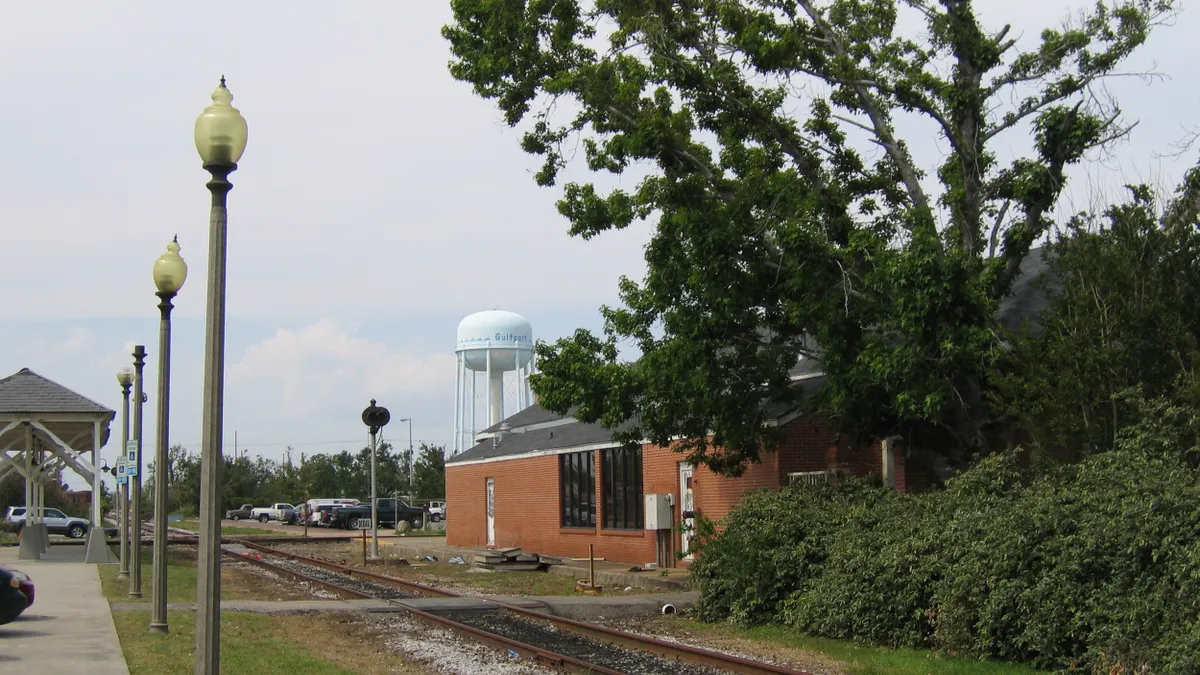Andrei Greenawalt is the head of public policy for the transportation technology company, Via.
The Infrastructure Investment and Jobs Act, which passed in November, has rightfully been lauded as a once-in-a-generation investment to fix our nation’s crumbling roads and bridges, accelerate the transition to electric vehicles and boost our public transit agencies.
But what’s been almost completely missed in the coverage of this law — and the think tank debates about whether it goes far enough — is its potentially transformative approach in encouraging communities to harness technology to improve mobility.
This really is new: the law has the potential to bring tech-enabled mobility to urban ‘transit deserts’ and rural communities alike, expanding economic opportunity for broad swaths of the country while reducing emissions and traffic congestion, all by leveraging the technology we have at our fingertips today.
And this law does not just include only one ‘smart cities’ set-aside, but threads innovation throughout a variety of programs aimed at increasing mobility and reducing emissions.
This is so important because cars are expensive for families and among the greatest contributors to greenhouse gas emissions in America. The only way to meet the moment and solve the climate, economic and equity crises our nation faces is by making it easier to travel without a personal vehicle. That requires making innovation in public transportation a major piece of the puzzle.
The second half of the 20th Century saw little innovation in transit, and effective transit systems were primarily the domain of a handful of big cities. But thanks in large part to technology and local leadership, rural communities and cities alike are now deploying on-demand transit systems to places that need options, quickly — all without one inch of track laid or tunnel bored.
For example:
In Birmingham, Alabama, the city rolled out an on-demand transit system that transformed residents' access almost overnight, increasing access to jobs, hospitals and education.
The city of Arlington Texas replaced its one, limited fixed-route bus service with a dynamically-routed, wheelchair-accessible on-demand service that now serves the entire city of 400,000, resulting in a ten-fold increase in public transit use.
Other cities like Seattle and Jersey City, New Jersey are using their on-demand services to solve the thorny ‘first/last mile’ problem and better connect residents to pre-existing transit hubs.
Some of the most exciting new transit service initiatives in the country are happening in the heartland. This law will accelerate that hard work and innovation with $2 billion for rural transportation programs. Along with support for traditional physical infrastructure projects, this program will invest substantially in digital transportation infrastructure with on-demand and integrated mobility services as eligible uses.
Investment in digital infrastructure will allow more communities to do what Valdosta, Georgia did this year when it launched its first city-run transit service in decades — a fleet of city-branded, on-demand vehicles that take riders from and to any point in the city of 50,000 people.
There’s also more than $6 billion for a new carbon reduction program that will support everything from congestion pricing to on-demand pooled trips. The program will require states to develop carbon reduction plans that must go beyond electric vehicles, shifting more riders to shared modes — a necessary, and too often underappreciated, tool in the fight against climate change.
Another $250 million will go to urban areas of more than a million people for a competitive congestion relief program to reduce driving of personal vehicles through on-demand microtransit and other measures.
Taken together, these programs have the potential to dramatically increase the number of Americans who have a real alternative to driving a car.
The bill is no small thing for economic mobility: cars are the second-largest household expense outside of a home, costing around $9,500 per year. In too many places in America, those who can’t afford a car are, for all intents and purposes, shut out of pursuing the American dream, unable to access jobs and education, or bound to excruciatingly long commutes.
The exact impact of this new law will depend on how ambitious the Biden administration and communities across the country are as they implement it, and whether they make sure that new technology-powered services are accessible to all and have a clear nexus to equity, sustainability and economic mobility.
And, of course, there is more work to do. The federal government will still fund road construction at much higher rates than transit. And in how it allocates transit dollars, the law will continue to reward factors like population and how many miles buses travel rather than what really matters — how effectively and efficiently transit systems connect people to opportunity.
But this legislation has the potential to be a springboard for a dramatically-improved public transportation system — one that reduces our dependence on fossil fuels and that increases the ability for all to climb the economic ladder, one in which public transit is seen as a first choice instead of a last resort.


















